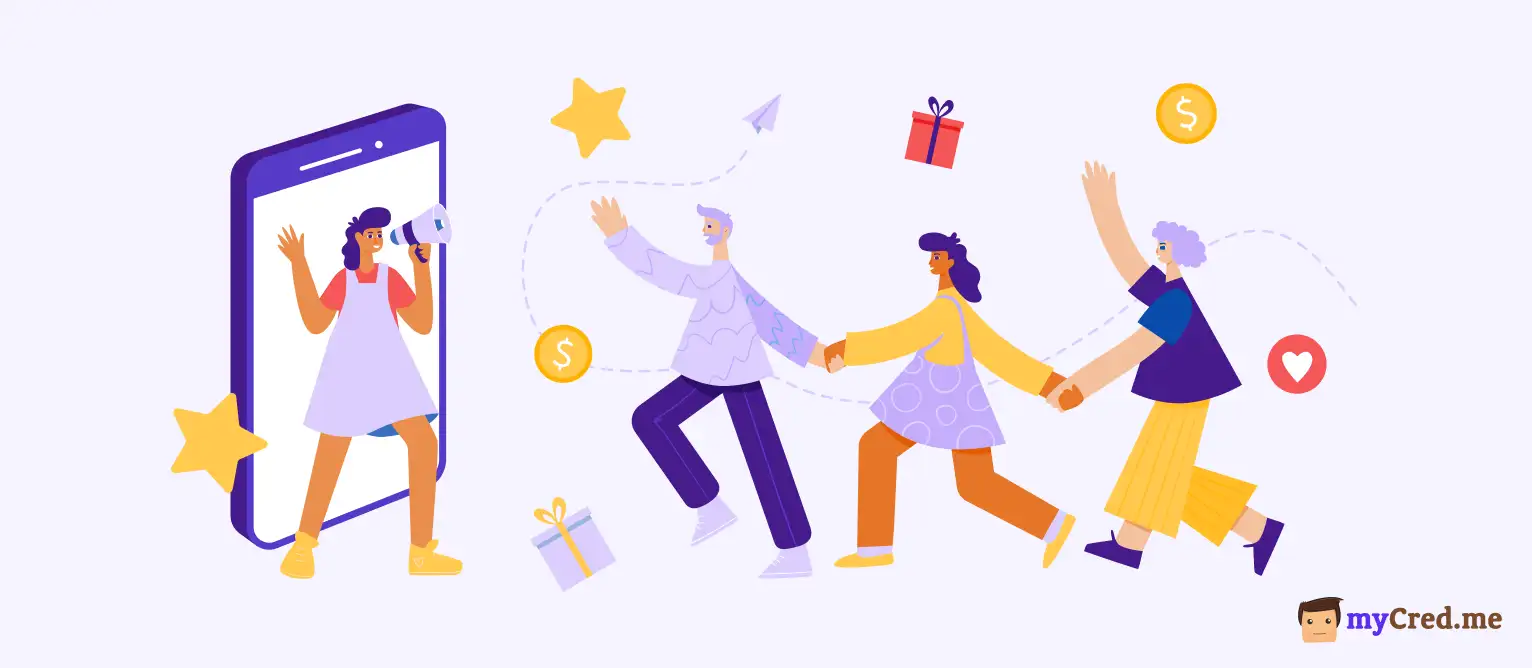
Most loyalty programs under effective loyalty program management fail within their first year. The reason? They skip the most critical step that separates winning programs from expensive mistakes. Your core concept isn’t just about design or user experience; it’s the difference between smooth implementation and costly chaos. This article reveals the strategic foundation of loyalty program management, plus the management insights that keep them profitable long-term.
You need to spend enough time building the basic setup of your loyalty rewards program before looking for a software company. A solid foundation means you won’t have to change the structure of your loyalty program strategies or how reward points management works after you go live. Plus, doing this work early usually makes the whole setup process much quicker and easier.
So, avoid the guesswork and read the following comprehensive checklist, which outlines the best practices for loyalty program management.
Summary of 30+ Best Practices For Effective Loyalty Program Management

Step 1: Establish a Loyalty Program Management Framework That Aligns with Your Marketing Goals
When introducing a loyalty initiative, many businesses tend to jump straight into discussing potential rewards or the fun, interactive features they want to add. While those aspects are certainly essential, foundational elements must be clearly defined before diving into those details.
These elements should guide your overall strategy and execution plans for loyalty program management.
Segment
1. Who are the customers you aim to engage?
Focus first on key demographics such as age, gender, and nationality. You can further refine your segmentation by considering variables like purchasing power, lifestyle, and product preferences.
2. How does your ideal customer typically shop?
Tiered loyalty programs can effectively drive repeat buying behavior. If you’re seeking simplicity and a higher average transaction value, an earn-and-redeem system might be ideal. In industries where purchases are less frequent or involve high-ticket items, consider a more generous and upfront reward approach.
As per HubSpot “Loyalty program participants strongly favor cash back rewards, with 49% of consumers using cashback features in brand loyalty programs, while 32% of businesses use exclusive membership perks as part of their strategy”
3. Which customer interaction channels will be part of the program?
Define which platforms the loyalty program will utilize and determine if you want to build an integrated, omnichannel experience. If a phased launch is in your plans, clearly outline which channels are included in the first wave and which will be rolled out later.
4. Are you considering a mobile-centric approach with a dedicated app?
Offering a loyalty app provides customers with an easy way to track and use their points or rewards anytime, without needing to visit a website or carry a card. This level of convenience tends to boost participation and deepen user engagement.
Geographies
5. In which regions will the loyalty initiative be launched?
Clarify which countries will be included in the initial phase and which markets you’re planning to expand into at a later stage.
6. What languages should the program support?
List the languages the program will be available in, beginning with your primary market. Prepare for multilingual expansion early, making it a part of your initial strategic planning.
7. Which currencies will be supported in the loyalty model?
Identify which monetary units the program will accommodate, as this affects point valuation, reward equivalence, and currency conversions.
KPI
8. What core business outcomes should the loyalty program drive?
Customer retention: Keeping current customers engaged is more cost-effective than acquiring new ones. The right reward structure helps extend customer loyalty over time.
Purchase frequency: A well-crafted program can encourage customers to engage with your brand more regularly.
Average transaction size: Motivating customers to spend more per visit is achievable through strategic incentives.
Return on investment: A properly managed loyalty program can deliver measurable profitability and support broader marketing goals.
Reward redemption rate: This metric reveals how actively members are using their rewards. Low redemption rates may suggest disengagement, indicating a risk of customer churn.
9. What marketing communication goals are you aiming to enhance?
Email open rates: Send customized updates and promotional messages about member benefits. Personalized content adds value and relevance.
Click-through rates: Include strong calls-to-action across all platforms, emails, mobile alerts, and in-app notifications.
Conversion metrics: Encourage desired behaviors with meaningful incentives, such as points for referrals or survey completions.
Social engagement: Inspire members to share their experiences online. This not only increases your brand’s visibility but also attracts new members to your loyalty program.
10. Are there any vanity KPIs you’re also hoping to boost?
Member activity: Simply growing your program with users who don’t engage or come back to purchase isn’t going to translate into meaningful results. Prioritize metrics that reflect active participation and recurring engagement from your existing members.
Social media following: A large follower count may look impressive, but it’s the interactions, likes, comments, and shares that actually reveal how well your audience connects with your brand.
Website visits: Instead of tracking the number of people who land on your site, focus on performance indicators like click-throughs, conversions, and the revenue those visits generate.
Step 2: Plan the First and Last Steps for Your Members
Loyalty program management has many paths for users, like games or checking in at stores. But the most important paths to plan first are how people join and how they leave the program. The way they start matters a lot!
If someone quits feeling upset, they probably won’t tell friends to join.
Enrolment
11. What does someone need to do to sign up?
- Make the sign-up button easy to see on your site.
- Decide if signing up will take one step or a few.
- Pick a sign-up form that’s simple.
Let people sign up with their Facebook, Google, or other accounts if possible.
Tell current users how they can also join the loyalty program with their account.
12. What do they need to tell you?
The important things to ask are: name, email, gender, and where they live.
You can also ask for things like phone number, age, and full address.
Ask things about how they use your product, like if someone who flies a lot likes the window or aisle seat.
Only ask for the most needed stuff first. You can ask for the rest later by giving rewards for filling out their profile or taking a quick survey.
13. Can people sign up in your stores, too?
Signing up in stores should be super quick and simple, since shoppers don’t have much time.
Let them sign up while they wait in line using touch screens or signs with QR codes.
Make sure your team knows how to explain the program and help people who have questions.
Opt out
14. How can members delete their accounts?
- Choose how they leave, either by going into their loyalty account and clicking “leave,” or by talking to your help team.
- Always ask them to confirm they want to leave, so they don’t do it by mistake.
Let them fill out a short form or write in a box explaining why they’re leaving. This will help you in your loyalty program strategies on what to fix.
Step 3: Think About Every Way People Can Use the Loyalty Program
This is the most important part where you choose what the loyalty program will do. Remember, the plan can always be changed later, so it’s good to know what other good loyalty programs are doing right now.
Even if you already have a great idea, be open to hearing new thoughts from others and be ready to make changes if needed.
The more time and care you give to making your plan now, the easier everything will go later.
Program Structure
15. What kind of loyalty program do you want to use?
– Points and levels are not the only choices you have.
– If people don’t shop often, perks are great because they give rewards right away.
– If you want fun and want people to play games, try using badges and fun tasks. This helps customers come back more.
– If you want fans who love your brand, think about programs for lifestyle, influencers, or community.
McKinsey emphasizes the need to integrate loyalty programs with pricing strategies and to break down silos between marketing (customer-centric) and merchandising (product-centric) teams. This integration requires new ways of working and deep analytical capabilities to personalize offers and dynamically adjust loyalty and pricing over time
Only make people pay to join if the prizes are super good and worth it.
16. What name will you give your loyalty program?
The name isn’t just a name! It’s part of the full idea of your program.
Don’t just call it “Rewards” or “Loyalty Club” with your store name. Be more fun.
Pick a name that shows what your fans like or makes them feel special for being in the group.
17. What name will you give to the levels, points, or VIP group?
The names you choose for levels, points, or your VIP club should match your theme and sound cool.
Try not to be boring. Instead of Bronze, Silver, and Gold, pick names that fit your brand.
Points can be called stars, gems, coins, or something else that sounds fun and fits your style.
18. If you use points, how much is one point worth?
You need to set how many loyalty reward points equal $1. This connects to how many points someone needs to get a prize.
You can give 1 point or even 10 for every dollar. Just make sure the point rules make sense.
Giving 100 points for $1 makes it feel like people are getting a lot, even if the real value is the same.
Giving fewer points keeps things simple and easy to track.
19. If you use levels, how many should you have?
Most programs use three levels: one for low, one for medium, and one for big spenders.
Try not to go over five levels because it can get too tricky.
You can also make a secret level for your best fans or influencers who help promote your brand.
20. What do people need to do to reach higher levels, considering reward points management?
- You can let them move up by spending money or earning points.
- If it’s by spending, it’s easy, like spending $500 to reach Silver.
- If it’s by points, you can say “get 1,000 points to reach Silver.”
- You can also give extra points for things like reviews or telling friends about your store.
21. What actions will you reward?
Online shopping can be made fun with things like treasure hunts, digital coupons, or games.
In stores, you can use things like in-store hunts, mobile passes, or prizes that only work if they shop in person.
Interactivity
22. Want to make special holiday or short-time deals?
You can make fun events for a short time that give extra points or fast loyalty rewards. These can make your program more exciting.
Think about adding events like double points on Valentine’s Day or early shopping before Christmas.
Make a list of these fun deals you want to start once your program under loyalty program management begins.
23. What actions that don’t involve buying will you give rewards for?
Inviting friends: Give rewards when someone tells their friends about your program. This helps bring new people. You can also get online influencers to join in with some special gifts.
Finishing their profile: Give people a little gift when they fill in their full details. This helps you know them better.
Sharing pictures or posts: Run a hashtag game on Instagram. Give a prize to the best comment or post. This gets more people talking about your brand.
Writing reviews: Say “thanks” to people by giving points or rewards when they write reviews. It helps others trust your products.
Watching your content: Share special videos or blogs only for members. Add a short quiz at the end to see if they understood it.
24. What other fun or different things will you reward?
Being active and healthy: Let people earn rewards when they go for a run or eat healthy. You can give them points for tracking exercise or walking.
Helping the planet: Give rewards for making green choices. This shows your company cares and makes customers happy to buy from you because they feel like they are helping too.
25. Do you want games in your program?
Spin the wheel: Make a fun game where people spin to win prizes. It helps get new people or bring back old ones. It works online and in stores.
Fun quizzes: Let people answer picture quizzes to tell you what they like. It’s fun and helps you learn about them.
Online treasure hunt: Hide special pages on your website. When someone finds one, they get a prize. It also helps them look through more of your stuff.
In-store treasure hunt: Let people search for marked items in the store. When they find one, they win something. While looking, they may see other things they want to buy.
Badges and tasks: Make little games where people do tasks to win a badge. Badges can give them something extra like a discount or free gift.
Leaderboard: Show a list of your top members. This makes others want to join and try harder to earn more points too.
26. Want to do contests on social media?
Instagram games: Use hashtags and fun comments to get more people talking about your brand. When real people post about you, others trust it more.
Step 4: Rewards Are the Jewels of a Loyalty Program
Rewards are special things or gifts given to members who perform exceptionally in your loyalty program management tenure. These can be treats, discounts, or other fun prizes that make people happy.
One of the most important parts of good loyalty program management is picking the right reward for your brand and your fans. Whether it’s a small gift, a money-off coupon, or a cool bonus, make sure it feels special.
Even if the final plan looks a little different than what you first thought, setting up your reward system the right way really matters. It’s one of the top things to do when building your loyalty program.
Rewards
27. What kind of rewards do you want to give?
Money rewards: People usually like getting money back or discounts. Things like coupons can help more people join your program. But money rewards alone won’t always keep them loyal.
Fun events and trips: You can give out cool stuff like concert tickets, free meals, parties, or hotel stays. These fun moments help people remember your brand and stay happy with it.
Gifts you can hold: Real items like small presents feel special and are often liked more than just coupons.
Better services: Things like fast shipping, free returns, or fixing items for free can make shopping easier and more fun for your customers.
Special rewards: Make something that only your brand offers. This can make your store feel one-of-a-kind.
If you give a coupon, say how much it’s worth. If it’s not money, describe what it is and how it helps.
28. Can rewards be used once or many times?
You need to decide if each reward can be used just one-time or again and again. Also think if it’s always there or just for a short time.
29. What must people do to get a reward?
Be clear on what people have to do. Maybe they have to spend a certain amount, buy a certain kind of item, or shop during a special time.
30. Will you give rewards that last forever?
Think about giving long-term rewards like free shipping, double points, or longer warranties to all members or just the top ones.
Benefits
31. What do people need to do to get these benefits?
If your loyalty program management has levels, say how people move up. Write down what each level gives. It helps to make a chart with level names, what’s needed, and what each level gets.
Some rewards should be for everyone. The best rewards should be just for the top members.
Maybe they have to spend a certain amount of money. Or maybe they need to do something like fill out their profile or finish a fun challenge.
32. Do benefits last forever, or do they end?
You have to say if people can use a benefit many times, just once, or only for a short while.
33. Do you want to have VIP groups?
You could make a special club around a popular item or service. Members might have to pay with points to join, but they get really good rewards inside.
If you don’t want people to pay, you can create a VIP group where only special invites get in. You pick who joins.
The VIP group should feel very special, with cool gifts and fun events that make people feel important.
Privilege
34. What do people need to join the VIP club or levels?
Maybe they have to be popular on social media. Maybe they need to be one of your top 100 shoppers. Or maybe they have to spend a lot of points to join.
35. What do VIP members get from loyalty program management?
Special fun times: Like being invited to fashion shows, private shopping events, or clubs that only members can go to.
Early shopping: Let VIPs buy new things before anyone else. It makes them feel special and doesn’t cost much for you.
Cool gifts: Things like books signed by famous people, or special items that only come once. It doesn’t have to be costly; if it’s rare or meaningful, it will still feel great.
Free shipping: Give your top members free shipping for a short time. Keeping it for the best levels makes it feel extra nice.
Better help: Give your best shoppers a special phone line or chat so they get help faster. It shows that you really care about them.
Step 5: Remember to Get Customer Info
When you make a rewards program, you also need to plan how you will check if it’s working well. Many people forget to do this when they are first coming up with the idea.
But it’s really important to think about this early, before the program starts. Why?
Because you need to talk to the people who help set up the program and let them know what info you want to track. You should start watching how your loyalty program management is doing from the first day.
If you don’t plan this, you might lose out on useful information that can help you make the program better.
Reporting
36. What data do you want to keep track of in your loyalty program management plan?
You should follow some key numbers to know if your loyalty plan is working well. These include:
- How much money you make back (ROI),
- How often are rewards used
- How many people join
- How many use their rewards
- How much your customers spend over time
- How likely they are to tell others about your brand (net promoter score).
You also need to look at if the program helps people buy more often and spend more each time, and if it helps stop people from leaving.
37. What kind of report tool would you like to use?
Most loyalty tools already give you some reports. But using special tools for deep reports can help even more. Some top loyalty program management tools people use are Power BI, Tableau, Oracle Analytics Cloud, and MicroStrategy.
Final Thoughts on Loyalty Program Management
A loyalty program that’s smart and well-planned can really help your business grow. When you set clear goals, give the right rewards, and talk to your customers in different ways, your stature as an efficient loyalty program manager automatically goes up. Whether you run it yourself or get help from a loyalty program management company, having a solid plan helps make sure your program works well and fits your business goals.
Want to make your loyalty program better? Install myCred today or get in touch with WPExperts and watch your business grow!
FAQs on Loyalty Program Management
- What are customer loyalty program management best practices?
Define structure, map member journeys, personalize rewards, track KPIs, and plan seamless sign-up and opt-out processes. - How do I start a loyalty program for my business?
Begin by identifying target customers, defining program goals, choosing reward types, and planning omnichannel integration. - What KPIs should I track in a loyalty program?
Track ROI, retention, reward redemption, purchase frequency, and customer lifetime value for meaningful performance insights on loyalty program strategies. - How do loyalty program tiers work?
Tiered loyalty programs work based on spending or engagement, offering increasing benefits like discounts, exclusive access, or VIP perks. - What rewards attract loyalty program members?
Popular rewards concerning customer loyalty programs include discounts, experiential perks, VIP access, physical gifts, and exclusive benefits customized to customer interests.




